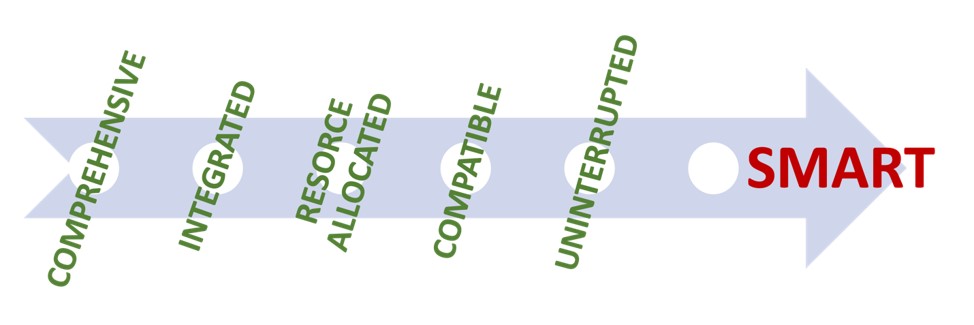There is a universal company segmentation worldwide which is micro, small, medium, and big companies. This definition is mainly focused on quantitative criteria such as turnover, number of employees, balance sheet figures, etc. According to this approach if your turnover and/or number of employees are below certain limits your defined as “small company”. But the question is that if a company is small in size for the last 10 years and another company is just established with a killer idea for its sector; can we call both companies “small”?
The answer to the above question is hidden mainly in the mindset of the business owner and of the managers of the company partly. If the mindset of the owner is confined in the size of the company and is no beyond the physical boundaries of the business, then the business may be called “small”. And most probably it will be destined to stay as “small”.
But let’s assume that the owner of a micro enterprise has a vision for her/his business to develop for the future in the market. And we call it vision because there is a plan behind it and the plan has inter-linked and coherent sub-plans in a step-by-step approach for which it is called a staged plan. Staged means it has a timeframe which is composed of short, medium and long term. Then this company is not a “small company” but is a “core company”.
A “core company” may be small in size but is at the dawn of the planned “boom” which will be managed through the plan. So it would not be reasonable to count it as an ordinary “small company” since it has a potential which is ready to transpose into kinetic action.
What kind of a mindset is required for an owner for having a “core company”? There should be a “Smart Growth Plan” for the business in the minds of the owner and the management team. Then the question is “What is a Smart Growth Plan”?

Comprehensive: The plan should consist of all the elements of the needs of a “healthy and sustainable growth”. i.e., product/service development plan, market development plan, production development plan, management development plan, financial/capital development plan, etc. based on sound analysis.
Integrated: The plan should handle all the elements of the plan in an interactive manner. There should be inter-connections between the plan elements and a staged approach in the timeframe for short, medium and long term. The plan is to be a full list of a to do list with before and after requisites and in its completeness. The strategies, targets and the action plans must be clearly set in it.
Resource Allocated: No plan is practical unless there is resource to run it. That’s why a resource either currently available or planned to be available in the future, should be linked to each element of the plan for it to be achieved.
Compatible: The aim is not to delineate the best plan of the universe, instead it should be coherent with the size, resources, sector, market, competition of the business in question. The plan is to be feasible which means achievable but at the same time demanding for the business.
Uninterrupted: Business planning is a “never ending story”. An update need arises just after the plan is completed. There will be changes in the sector, competition, market, customer demands, and these will create a need to update the plan. The achievements on the plan are also sources of the need for update. That’s why the plan must be uninterruptedly updated.
A business is “small” as long as the mindset of the owner is small and no business is “small” if there is a “Smart Growth Plan” within the company. Then it is your turn to decide if your business is “small” or not.
